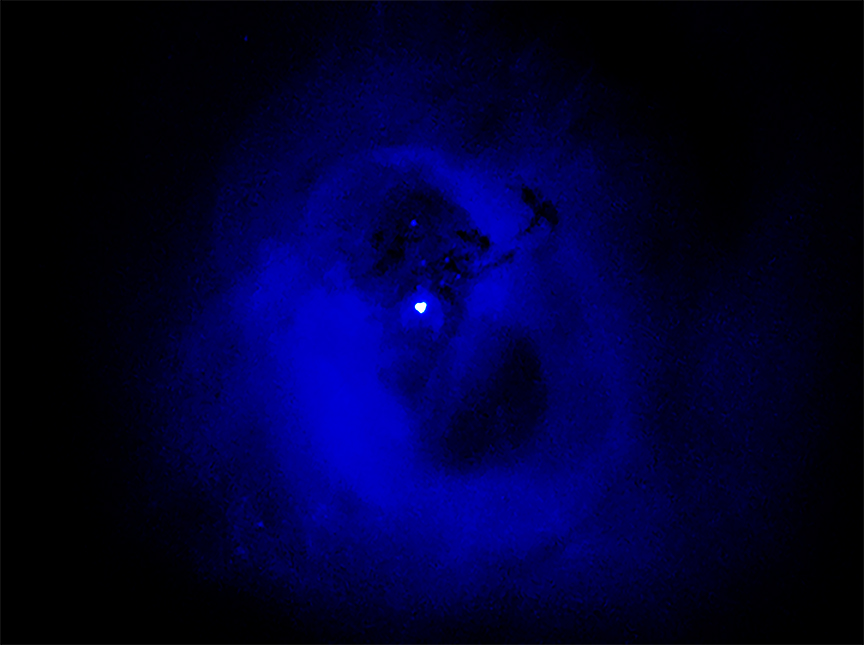
 Credit: X-ray: NASA/CXO/Oxford University/J. Conlon et al.
Credit: X-ray: NASA/CXO/Oxford University/J. Conlon et al.
New Dark Matter Model on the Line?
Most of the material Universe is composed of mysterious stuff called "dark matter". Dark matter gravitates, but emits no electromagnetic radiation. The existence of dark matter was first established by Jacobus Kapteyn, then Fritz Zwicky and later by Vera Rubin, while the amount of dark matter precisely measured by the WMAP and Plancks cosmic background satellites. Given the dominance of dark matter over normal matter - there's roughly five times more dark matter than normal atoms in the Universe - it's frustrating that we don't know what this material is. Our best guess is that dark matter is made of strange subatomic particles whimsically callled WIMPs (for weakly-interacting massive particles). Physicists and astrophysicists have been frantically searching for signs of theorized WIMPs, both on earth and in space. Astrophysicists caused significant excitement recently by identifying an unexpected feature, or emission line, in the X-ray spectra of galaxy clusters at an energy at which no line from normal matter should exist. Astrophysicists suggested that this feature might be produced by a particular type of dark-matter particle. However, excitement dimmed when higher resolution observations of the Perseus Cluster by the Soft X-ray Spectrometer on the Hitomi observatory failed to show the presence of any line. But is this the final nail in the coffin of this dark-matter model? A new analysis of X-ray emission from the Perseus cluster using data from the Chandra X-ray Observatory, the XMM-Newton X-ray Observatory might indicate a way out. The Chandra and XMM data show that, in addition to possible emission, there may in fact be absorption of dark-matter X-rays at just the right energy by dark matter near the supermassive black hole in the Perseus cluster. This absorption, it is suggested, might accounts for the weakness of the line in the Hitomi spectrum. The hunt continues!
Published: January 8, 2018
<
HEA Dictionary ● Archive
● Search HEAPOW
● Other Languages
● HEAPOW on Facebook
● Download all Images
● Education ● HEAD
>

Each week the HEASARC
brings you new, exciting and beautiful images from X-ray and Gamma ray
astronomy. Check back each week and be sure to check out the HEAPOW archive!
Page Author: Dr. Michael F. Corcoran
Last modified Monday, 26-Feb-2024 17:34:57 EST


